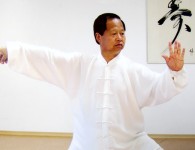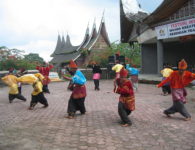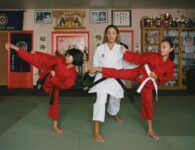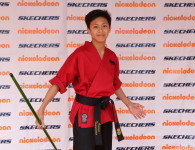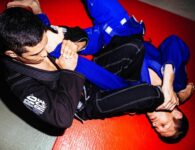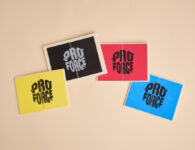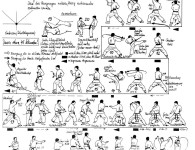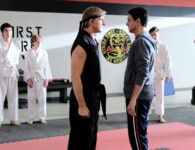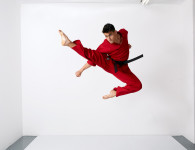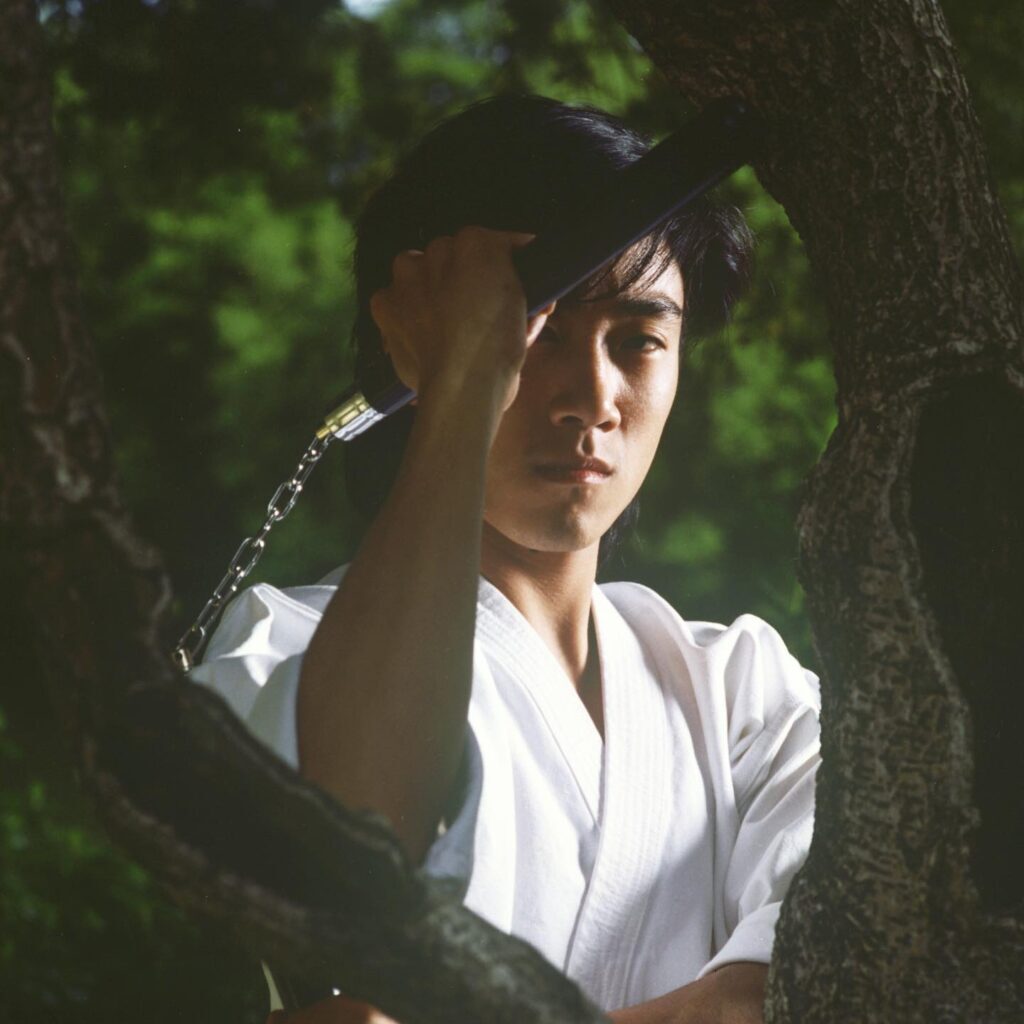
Finding the right nunchaku, aka nunchucks, is a little bit like nunchaku training. It takes time, research, and a solid understanding of yourself to get it right. It might be difficult, but if you put in the effort, you’ll be rewarded.
Training with a martial arts weapon like nunchaku can improve your balance, posture, focus, hand-eye coordination, and speed. It can boost your self-esteem and might even make you feel like you’re almost as cool as Bruce Lee in Enter the Dragon or a Ninja Turtle.
Working with the right set of nunchucks can make that training more effective, powerful, satisfying, and safe.
Many factors go into figuring out which nunchucks will be the right ones for you. You’ll have to figure out the best fit for your body and for your training goals. With the wide range of designs and colors available, you might want to take your personal style into consideration, too. You’ll also have to figure out what kind of martial arts weapons are legal where you live—and whether you’ll be able to purchase and train with nunchaku at all.
It’s a lot to keep in mind, but you don’t have to do it alone. This blog is designed to help you through every step of the process so that you can find the most effective (and best looking) nunchucks and start swinging.
Here’s how to find the right pair of nunchaku for you and your martial arts training goals.
1. Where are you located?
The first thing that you’ll need to do is some basic research about the laws involving the ownership and use of martial arts weapons where you live. Different countries and different regions have their own legislation regarding nunchaku. Some countries, like Germany, have banned them outright. Others have strong restrictions about who can own nunchaku but might allow people to train with them if they obtain the proper licenses. Rules can also vary depending upon what materials the nunchaku are made of and where you intend to use them.
In the U.S. the law depends on the state. Currently, nunchaku are not permitted in Arizona, California, and Massachusetts.
If you live somewhere that does not permit nunchaku, you will probably want to consider alternate forms of martial arts training instead. You also might also want to stay informed about the current situation, because things can change over time. New York state, for example, banned nunchucks in 1974, but that was overturned in 2018.
(AWMA and ProForce® offer nunchaku that are designed for demonstration or decorative purposes only. Use nunchaku only under supervision and perform techniques appropriate for your skill level)
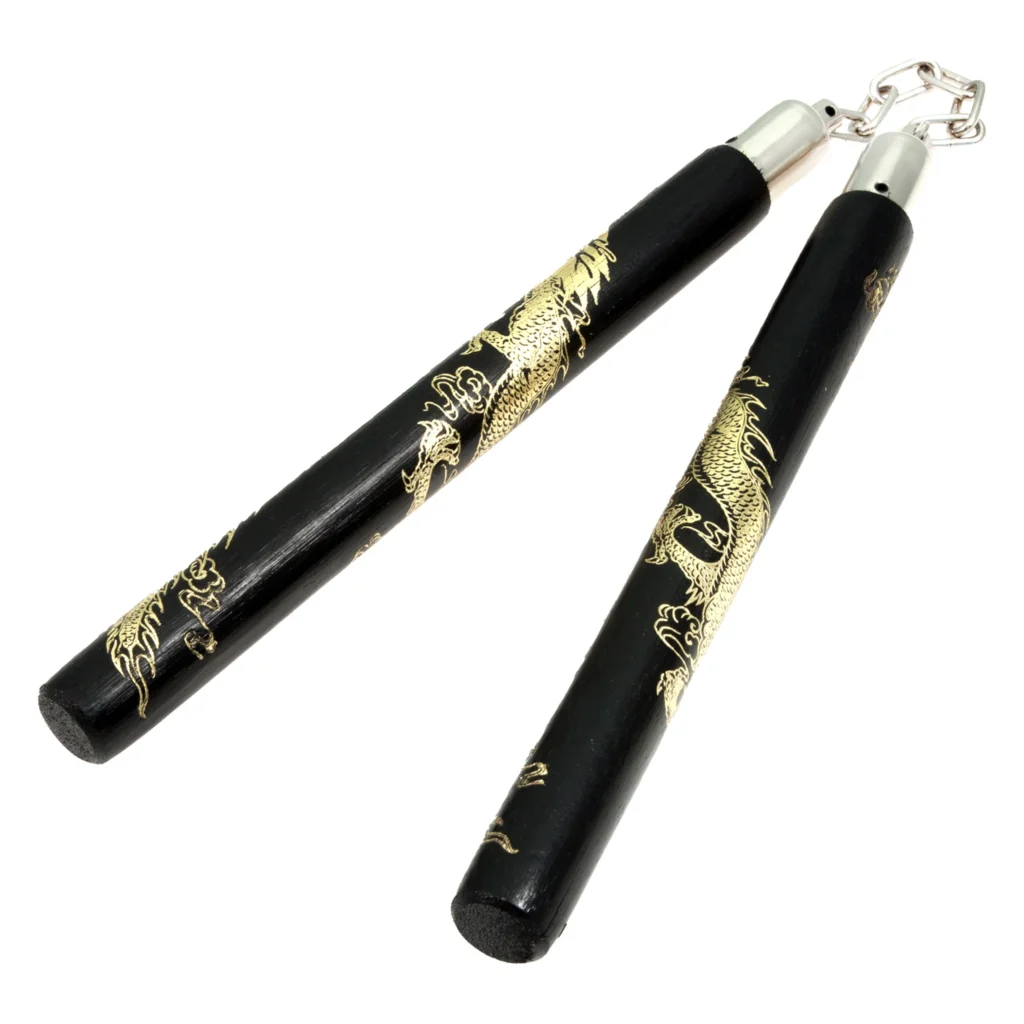
2. What are your training goals?
Once you’ve determined if you can purchase and use nunchaku where you live, it’s time to think about what you’ll be doing with your nunchaku. Some materials are better for some goals and skill levels than others.
Foam or foam-padded nunchucks with a PVC core are a good choice for beginners and for practice because they’re light-weight and are easier to grip and handle. Light wood is also an option, although that grip might be a little less comfortable than foam.
More advanced martial artists and traditionalists sometimes prefer a heavier solid wood handle.
If you’re looking at getting into demonstrations, tricks, or competitions, there are nunchaku designed specifically for those purposes, like the lightweight, high-quality wood Super Speedchucks II, or the ultra-light wood G-Force “Next Gen” Chrome Nunchaku.
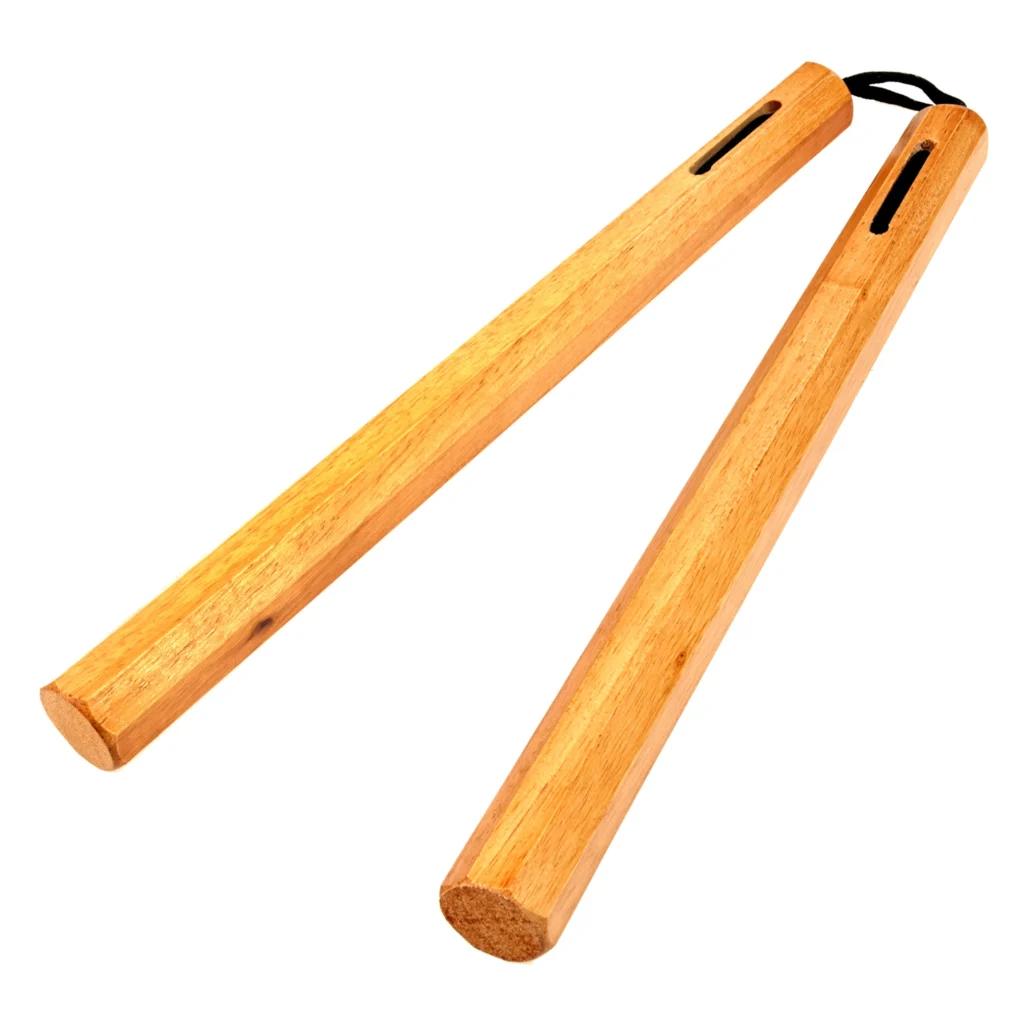
3. What’s your size?
Once you’ve figured out the general type of nunchaku you’re looking for, it’s time to start measuring. Using the wrong size of nunchaku can lead to frustration and injury, so it’s important to find a pair that are suited to your hands.
There are two main things that you need to take into consideration when sizing nunchaku.
The first is the right length of the chain, rope, or cord that connects the two sticks. According to the AWMA Nunchaku Buying Guide, that part should never be longer than the width of your palm. “Find the proper length by dangling the nunchaku from your wrist with your palm face down. Grab the outer stick with your opposite hand and then pull it towards you in a tying motion. You should feel slight pain or pressure from the squeeze. If you don’t, then the pair is too long for you and you’ll need to go down a size. AWMA offers nunchaku in various lengths, including the standard 12-inch length that is common among beginners.”
The second thing to look for is a proper balance between the two sticks. “To test for proper balance, lay the nunchakus over your palm and perpendicular to the floor. The weight should be balanced to the outer edges of the sticks. Proper balance allows the user to perform flashier tricks, such as overhand twirls that involve a low grip. The right balance also ensures maximum ease and control of the swing arcs when executing moves.”
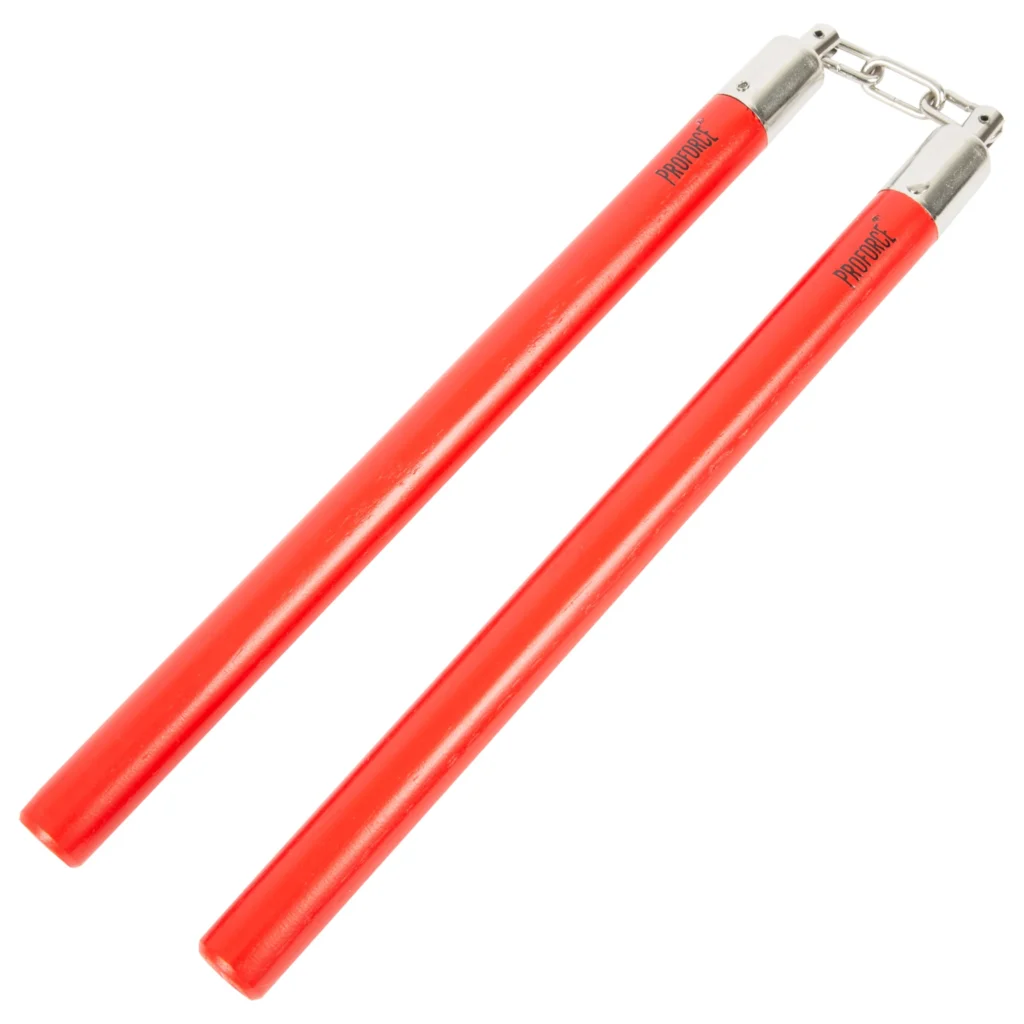
4. What’s your favorite color?
Once you’ve taken care of the serious business, you can start to think about your personal preferences and style.
Looks can actually have a practical purpose in martial arts involving the nunchaku. Colors and patterns catch people’s attention, which can make them more aware of the techniques you’re performing during demonstrations and competition. Any color or design has the potential to make audiences notice your skills, so the specifics are up to you.
If you like bright solids, ProForce’s Super Speedchuks and Super Speedchucks II come in a wide variety of colors including black and brown if you don’t love flashier colors.
Some nunchaku also come with a finish designed with presentation in mind, like the G-Force Illuminator Nunchaku, which have a shimmer that changes with light and movement.
If you want even more dazzle, the striped ProForce® Zebra Nunchaku come in multiple color combos.
If you’re looking for a more intricate design, you can also look into a dragon pattern like the ProForce® Rattan Speedchuck with Dragon.
Have some fun and express yourself!
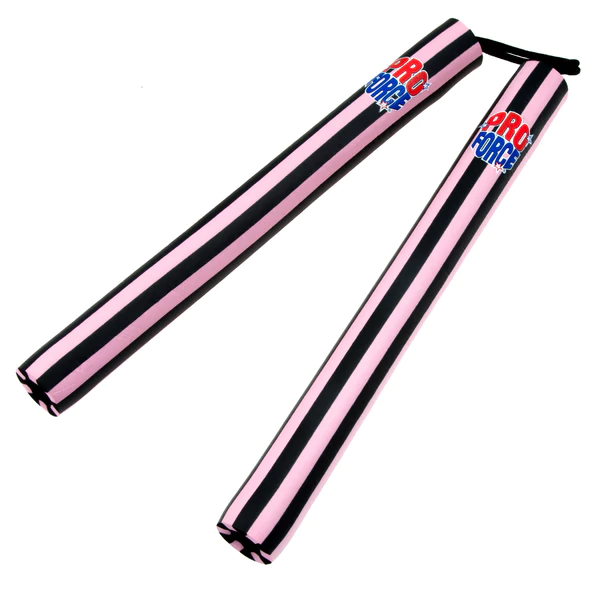
For more information on purchasing nunchaku, see AWMA’s Nunchaku Buying Guide.
For more on the history of nunchaku and nunchaku training, see our blog post, “The Nunchaku: A Brief History Behind This Weapon.”





